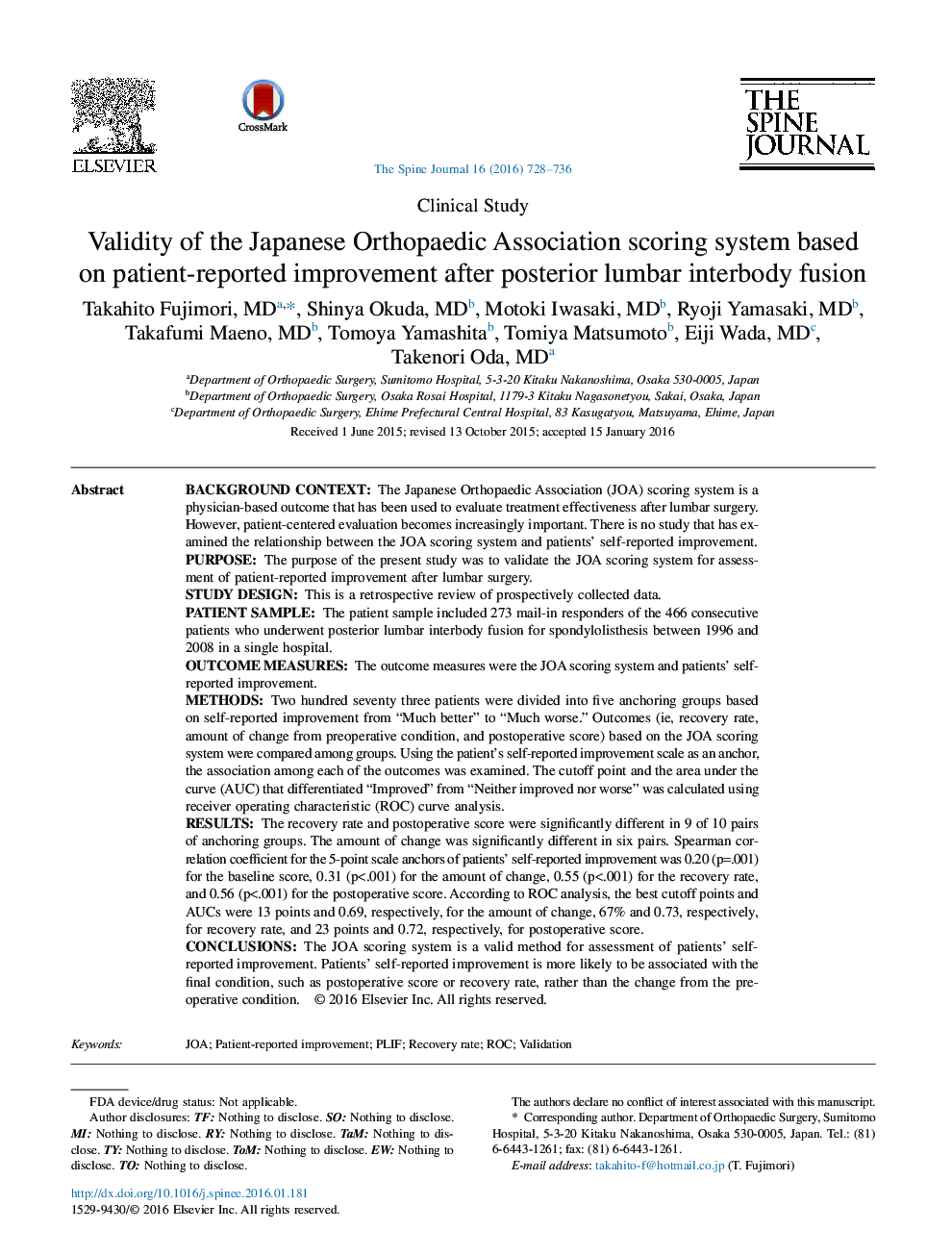| کد مقاله | کد نشریه | سال انتشار | مقاله انگلیسی | نسخه تمام متن |
|---|---|---|---|---|
| 4095961 | 1268549 | 2016 | 9 صفحه PDF | دانلود رایگان |
Background ContextThe Japanese Orthopaedic Association (JOA) scoring system is a physician-based outcome that has been used to evaluate treatment effectiveness after lumbar surgery. However, patient-centered evaluation becomes increasingly important. There is no study that has examined the relationship between the JOA scoring system and patients' self-reported improvement.PurposeThe purpose of the present study was to validate the JOA scoring system for assessment of patient-reported improvement after lumbar surgery.Study DesignThis is a retrospective review of prospectively collected data.Patient SampleThe patient sample included 273 mail-in responders of the 466 consecutive patients who underwent posterior lumbar interbody fusion for spondylolisthesis between 1996 and 2008 in a single hospital.Outcome MeasuresThe outcome measures were the JOA scoring system and patients' self-reported improvement.MethodsTwo hundred seventy three patients were divided into five anchoring groups based on self-reported improvement from “Much better” to “Much worse.” Outcomes (ie, recovery rate, amount of change from preoperative condition, and postoperative score) based on the JOA scoring system were compared among groups. Using the patient's self-reported improvement scale as an anchor, the association among each of the outcomes was examined. The cutoff point and the area under the curve (AUC) that differentiated “Improved” from “Neither improved nor worse” was calculated using receiver operating characteristic (ROC) curve analysis.ResultsThe recovery rate and postoperative score were significantly different in 9 of 10 pairs of anchoring groups. The amount of change was significantly different in six pairs. Spearman correlation coefficient for the 5-point scale anchors of patients' self-reported improvement was 0.20 (p=.001) for the baseline score, 0.31 (p<.001) for the amount of change, 0.55 (p<.001) for the recovery rate, and 0.56 (p<.001) for the postoperative score. According to ROC analysis, the best cutoff points and AUCs were 13 points and 0.69, respectively, for the amount of change, 67% and 0.73, respectively, for recovery rate, and 23 points and 0.72, respectively, for postoperative score.ConclusionsThe JOA scoring system is a valid method for assessment of patients' self-reported improvement. Patients' self-reported improvement is more likely to be associated with the final condition, such as postoperative score or recovery rate, rather than the change from the preoperative condition.
Journal: The Spine Journal - Volume 16, Issue 6, June 2016, Pages 728–736
